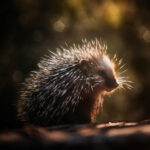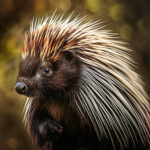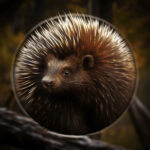Porcupines are fascinating creatures known for their unique defense mechanism – quills. These spiky rodents are found in various parts of the world and have a diverse diet that consists of both plant material and occasionally small animals. While they are primarily herbivores, porcupines have been known to eat a variety of foods, including bark, leaves, twigs, fruits, vegetables, and even bones. In this article, we will explore in detail what porcupines eat, their feeding habits, and how their diet contributes to their overall survival. So, let’s dive in and discover the dietary preferences of these prickly creatures!
Key Takeaways
- Porcupines primarily eat plants, including bark, twigs, leaves, and fruits.
- They have a preference for trees such as pine, fir, and hemlock.
- Occasionally, porcupines may consume insects, small animals, and bones for additional nutrients.
- Their specialized teeth and digestive system allow them to efficiently extract nutrients from tough plant material.
- Porcupines are herbivores and do not eat meat.
Understanding Porcupines: An Overview
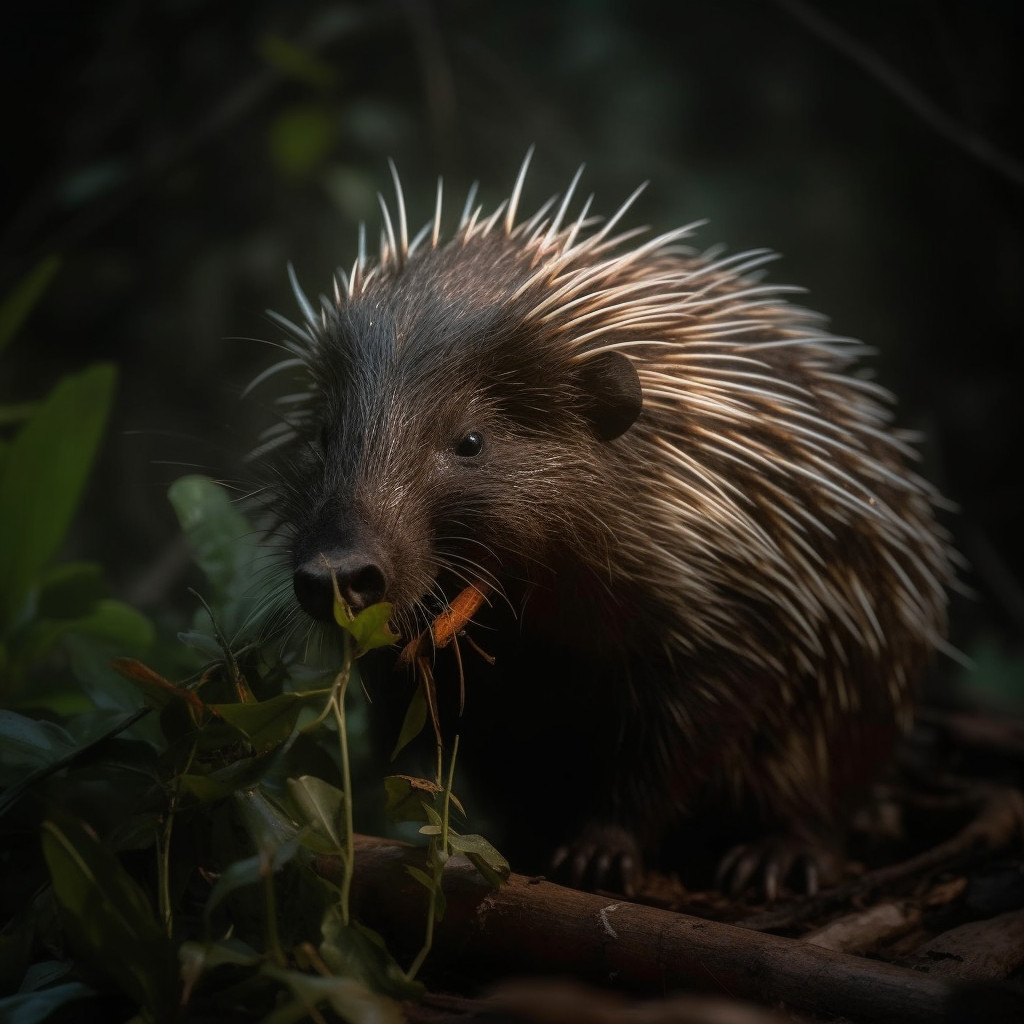
A. The Porcupine Species: Asiatic, Sumatran, Mexican, and More
Porcupines are fascinating creatures that belong to the family of rodents. There are several species of porcupines found around the world, each with its own unique characteristics and adaptations. Let’s take a closer look at some of the different porcupine species:
-
Asiatic Porcupine: The Asiatic porcupine, also known as the Himalayan porcupine, is found in various parts of Asia, including India, Nepal, and Southeast Asia. It is one of the largest porcupine species, measuring up to 2.5 feet in length. Asiatic porcupines have long quills that can reach up to 18 inches in length.
-
Sumatran Porcupine: The Sumatran porcupine is native to the Indonesian island of Sumatra. It is a medium-sized porcupine species, with a body length of around 2 feet. Sumatran porcupines have short quills that are densely packed, providing them with excellent protection against predators.
-
Mexican Porcupine: The Mexican porcupine is found in Mexico and Central America. It is a small to medium-sized porcupine species, measuring around 2 feet in length. Mexican porcupines have long, thin quills that are easily detachable, allowing them to escape from predators by leaving a trail of quills behind.
-
North American Porcupine: The North American porcupine is the largest porcupine species found in North America. It has a stocky body and short legs, measuring up to 3 feet in length. North American porcupines have long, sharp quills that are coated with a barb-like structure, making them difficult to remove once embedded in an attacker.
B. Habitats of Porcupines: From Deserts to Temperate Forests
Porcupines are adaptable creatures that can thrive in a variety of habitats. They can be found in diverse environments, ranging from deserts to temperate forests. Here are some of the habitats where porcupines are commonly found:
-
Deserts: Despite their prickly appearance, porcupines have managed to survive in arid regions such as deserts. They are able to find food and water sources in these harsh environments, relying on their ability to dig for roots and tubers.
-
Forests: Porcupines are well-suited to forested areas, where they can find an abundance of food and shelter. They are excellent climbers and can navigate through trees with ease. Forests provide porcupines with a variety of food sources, including bark, leaves, and fruits.
-
Grasslands: Some porcupine species can also be found in grassland habitats. These open areas offer a different range of food options for porcupines, such as grasses, herbs, and shrubs. Grasslands provide ample space for porcupines to forage and move around.
-
Mountains: Porcupines are known to inhabit mountainous regions as well. They are able to adapt to the challenging terrain and colder climates found at higher elevations. Mountainous habitats offer a diverse range of vegetation for porcupines to feed on, including alpine plants and coniferous trees.
In conclusion, porcupines are fascinating creatures that come in various species and can adapt to different habitats. Understanding their species and habitats helps us appreciate their unique characteristics and the challenges they face in the wild.
The Porcupine Diet: A Comprehensive Look
A. What Do Porcupines Eat: A General Perspective
Porcupines are fascinating creatures known for their sharp quills and unique appearance. But have you ever wondered what these prickly animals eat? Let’s take a closer look at the porcupine diet and explore their food habits.
Porcupines are herbivores, which means they primarily feed on plant material. Their diet consists of a variety of foods, including bark, leaves, twigs, fruits, and even roots. However, the exact types of food porcupines eat can vary depending on their habitat and availability of resources.
B. Porcupines in the Wild: What’s on the Menu?
In the wild, porcupines have a diverse range of food sources to choose from. They are known to be opportunistic eaters, meaning they will consume whatever food is readily available to them. This adaptability allows them to survive in various environments, including forests, grasslands, and even deserts.
One of the primary food sources for wild porcupines is bark. They have strong teeth and jaws that enable them to gnaw on tree bark, stripping it away to access the nutrient-rich inner layer. This behavior helps keep their teeth sharp and healthy.
In addition to bark, porcupines also feed on leaves and twigs. They have a preference for tender young shoots and foliage, which provide them with essential nutrients. Porcupines are known to climb trees to reach these food sources, using their sharp claws and strong tails for balance.
When it comes to fruits, porcupines are particularly fond of them. They have a keen sense of smell, allowing them to locate ripe fruits from a distance. Fruits provide porcupines with a good source of hydration and energy due to their high water and sugar content.
Roots are another food item that porcupines include in their diet. They will dig into the ground using their strong front claws to access underground roots. This behavior is more common in areas where other food sources may be scarce.
C. Porcupines in Zoos: A Controlled Diet
Porcupines in zoos have a controlled diet to ensure they receive the necessary nutrients for their well-being. Zookeepers carefully design their diet to mimic their natural food preferences while providing a balanced and nutritious meal.
The diet of captive porcupines typically consists of a variety of fruits, vegetables, and specially formulated pellets. These pellets are specifically created to meet the nutritional needs of porcupines and ensure they receive all the essential vitamins and minerals.
Zookeepers also provide porcupines with browse, which refers to fresh branches and leaves from non-toxic trees. This helps simulate their natural behavior of gnawing on bark and foliage.
It’s important to note that porcupines in zoos may have dietary restrictions based on their health conditions or specific dietary needs. Zookeepers work closely with veterinarians to monitor their nutritional intake and make any necessary adjustments.
In conclusion, porcupines have a diverse diet consisting of bark, leaves, twigs, fruits, and roots. They are adaptable eaters, making use of the available food sources in their environment. Whether in the wild or in captivity, porcupines have unique dietary preferences that contribute to their overall health and well-being.
Porcupine Eating Habits: A Deeper Dive

A. When Do Porcupines Eat: Understanding Their Feeding Schedule
Porcupines have unique feeding habits that are influenced by various factors, including their natural environment and availability of food sources. Understanding when porcupines eat can provide valuable insights into their behavior and lifestyle.
Porcupines are primarily nocturnal creatures, meaning they are most active during the night. This nocturnal behavior is believed to be an adaptation that helps them avoid predators and find food more easily. They have excellent night vision and a keen sense of smell, which aids them in locating food even in the dark.
While porcupines are primarily nocturnal, they may also be active during the day, especially during the winter months when food is scarce. During this time, they may venture out in search of food during daylight hours to ensure they get enough sustenance to survive.
B. How Often Do Porcupines Eat: Frequency and Quantity
Porcupines have a slow metabolic rate, which means they don’t need to eat as frequently as some other animals. On average, porcupines eat about once every night or every other night. However, this can vary depending on factors such as the availability of food and the individual porcupine’s nutritional needs.
When it comes to the quantity of food consumed, porcupines have a relatively low intake compared to their body size. They typically consume around 2-4% of their body weight in food each day. This may not seem like much, but considering their slow metabolism and the fact that they primarily eat low-calorie foods, it is sufficient to meet their energy requirements.
C. How Do Porcupines Eat: The Mechanism Behind the Meal
Porcupines are herbivores, meaning they primarily eat plant material. Their diet consists of a variety of foods, including bark, twigs, leaves, fruits, and roots. They are known to be opportunistic feeders, meaning they will consume whatever plant material is available to them.
One of the most fascinating aspects of porcupine eating habits is their ability to consume foods that are typically difficult for other animals to digest. They have specialized teeth and a strong jaw that allows them to chew on tough plant material, such as bark and twigs. This unique adaptation enables them to access nutrients that would otherwise be inaccessible to many other herbivores.
Porcupines also have a preference for certain types of food. They are particularly fond of the inner bark of trees, which is more nutritious and easier to digest than the outer bark. They will often strip the bark off trees using their sharp incisors and consume it as part of their diet.
In addition to bark, porcupines also consume fruits and roots. Fruits provide them with essential vitamins and minerals, while roots serve as a source of carbohydrates. This diverse diet ensures that porcupines receive a balanced nutritional intake.
In conclusion, porcupines have unique eating habits that are influenced by their nocturnal nature, slow metabolism, and specialized teeth. They primarily eat plant material, including bark, twigs, leaves, fruits, and roots. By understanding their feeding schedule, frequency of eating, and the mechanism behind their meal, we can gain a deeper appreciation for these fascinating creatures and their dietary preferences.
Porcupines and Their Peculiar Tastes: An Exploration
A. Why Do Porcupines Eat Rubber and Plywood: A Curious Case
Porcupines are fascinating creatures with a unique diet that often surprises people. While they are primarily herbivores, feeding on a variety of plants, leaves, and bark, there have been instances where porcupines have been observed eating unconventional items like rubber and plywood. This peculiar behavior raises the question: why do porcupines eat these unusual materials?
One possible explanation for this behavior is that porcupines are attracted to the taste and texture of rubber and plywood. These materials may provide a satisfying chewing experience for them, similar to the way they chew on tree bark. Additionally, rubber and plywood may contain traces of salt or other minerals that porcupines find appealing.
Another reason porcupines may eat rubber and plywood is due to a phenomenon known as “pica.” Pica is a condition where animals, including humans, have a craving for non-food items. It is believed to be caused by nutritional deficiencies or behavioral factors. In the case of porcupines, it is possible that they consume rubber and plywood out of instinct or as a way to supplement their diet with additional nutrients.
It is important to note that while porcupines may occasionally eat rubber and plywood, these materials should not be a regular part of their diet. Ingesting non-food items can be harmful to their digestive system and overall health. Therefore, it is crucial to ensure that porcupines have access to a proper diet consisting of their natural food sources.
B. Porcupines and Their Affinity for Bark: The Why and the What
When it comes to porcupine diet, one of their primary food sources is bark. Porcupines have a strong affinity for tree bark, and they can often be found gnawing on the trunks of trees. But why do porcupines have such a penchant for bark, and what types of bark do they eat?
Porcupines have specialized teeth and jaws that are well-suited for chewing on tough plant material like bark. The outer layer of a tree’s bark provides a rich source of nutrients, including sugars, starches, and fibers. By consuming bark, porcupines can obtain the energy and nutrients they need to survive.
In terms of the types of bark porcupines eat, they are not particularly picky. They will consume the bark of various tree species, including conifers and hardwoods. However, they do have a preference for certain types of bark, such as the bark of aspen, willow, and pine trees. These trees tend to have softer bark, making it easier for porcupines to chew and digest.
Porcupines use their sharp incisors to strip away the bark from trees, leaving behind distinct tooth marks. This feeding behavior can sometimes cause damage to trees, especially if a large number of porcupines are present in an area. However, it is important to remember that porcupines play a vital role in the ecosystem by helping to control tree growth and promoting forest regeneration.
C. Porcupines and Metal: Unraveling the Mystery of Aluminum and Antlers
It may come as a surprise, but porcupines have been known to chew on metal objects, including aluminum and antlers. This behavior raises questions about why porcupines are attracted to these materials and what purpose it serves in their diet.
One possible explanation for porcupines chewing on aluminum is that they are attracted to the salt residue that accumulates on the metal surface. Porcupines have a strong sense of smell and can detect even small traces of salt. Aluminum, being a relatively soft metal, may provide a satisfying texture for them to gnaw on while also offering a taste of salt.
As for antlers, porcupines may chew on them for a different reason. Antlers are made of bone, which contains essential minerals like calcium and phosphorus. By gnawing on antlers, porcupines may be able to obtain these minerals, which are important for their overall health and bone development.
It is worth noting that while porcupines may occasionally chew on aluminum and antlers, these materials should not be a regular part of their diet. Ingesting metal or bone can be harmful to their teeth and digestive system. Therefore, it is crucial to provide porcupines with a balanced diet that consists primarily of their natural food sources.
In conclusion, porcupines have a diverse and sometimes peculiar diet. While they primarily feed on plants, leaves, and bark, they may occasionally consume non-food items like rubber, plywood, aluminum, and antlers. These behaviors can be attributed to factors such as taste preferences, nutritional deficiencies, or instinctual behaviors. However, it is important to ensure that porcupines have access to a proper diet consisting of their natural food sources to maintain their health and well-being.
Regional Diets of Porcupines: A Geographic Perspective
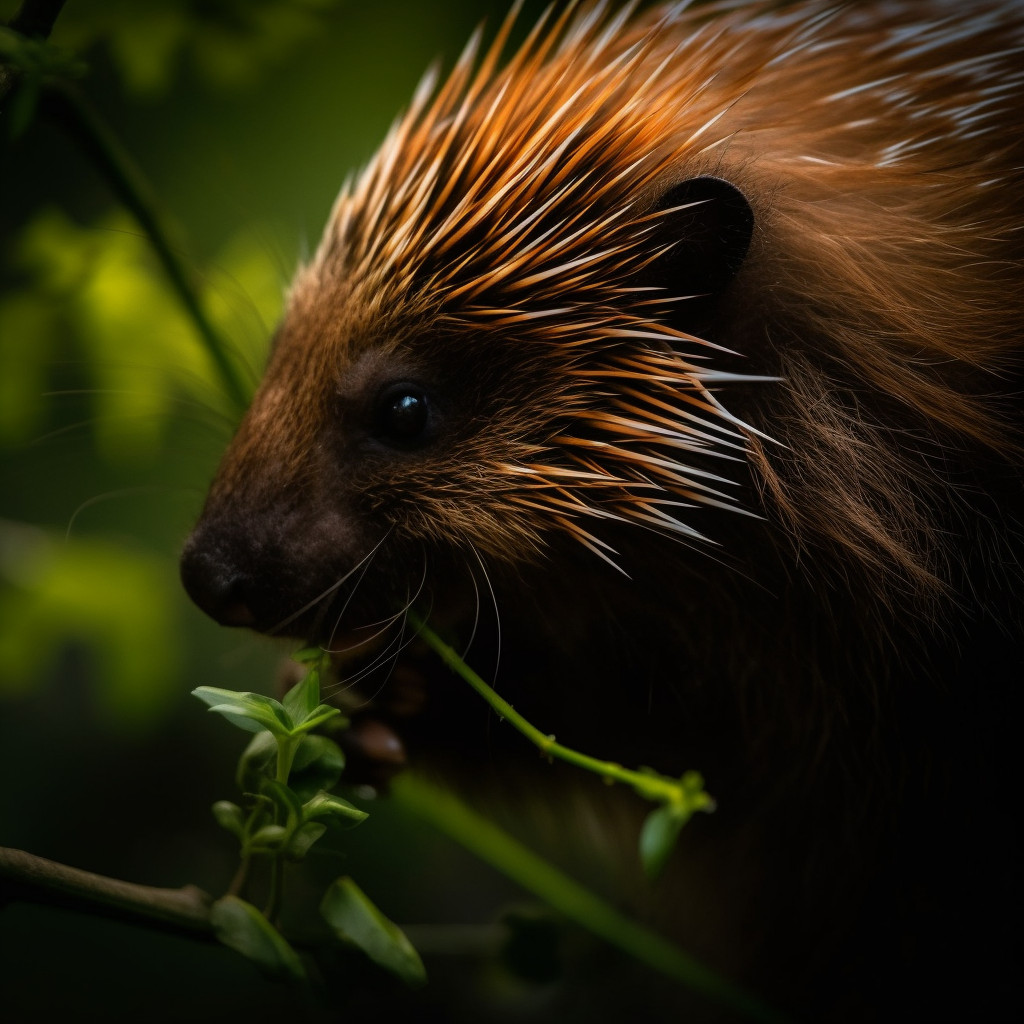
A. What Do Porcupines Eat in Maine, Minnesota, and Texas: A North American Perspective
Porcupines are fascinating creatures that inhabit various regions around the world, including North America. While their diet may vary slightly depending on their specific location, porcupines in Maine, Minnesota, and Texas share similar food preferences.
-
Bark: Porcupines are known for their ability to climb trees, and one of their favorite food sources is tree bark. They have strong teeth that allow them to gnaw on the bark, which provides them with essential nutrients and roughage.
-
Leaves: In addition to bark, porcupines in these regions also consume leaves. They have a particular fondness for deciduous trees such as maple, birch, and aspen. Porcupines will climb the trees to reach the leaves, which they strip off the branches using their dexterous front paws.
-
Fruits: Porcupines have a diverse diet that includes fruits when available. In Maine, Minnesota, and Texas, porcupines may feast on fruits such as apples, berries, and even cacti fruits. Fruits provide porcupines with essential vitamins and minerals, contributing to their overall health.
-
Vegetation: Porcupines are herbivores, and they rely heavily on vegetation for sustenance. In these regions, they may consume a variety of plant materials, including twigs, shoots, and even small branches. This plant-based diet ensures they receive the necessary nutrients to thrive.
B. Porcupines in Canada: A Canadian Diet
Canada is home to a significant population of porcupines, and their diet reflects the diverse ecosystems found in the country. Porcupines in Canada have a varied diet that includes:
-
Bark: Similar to their North American counterparts, Canadian porcupines also consume bark. They target a range of tree species, including conifers like spruce and pine. Bark serves as an important food source for porcupines, providing them with both nutrition and roughage.
-
Roots: Porcupines in Canada have been observed digging for roots, particularly during the winter months when other food sources may be scarce. They use their strong claws to excavate the ground and access the nutrient-rich roots beneath the surface.
-
Leaves and Twigs: Just like in other regions, Canadian porcupines rely on leaves and twigs as part of their diet. They consume a variety of tree leaves, including those from poplar, willow, and alder trees. Twigs also make up a significant portion of their diet, providing them with additional sustenance.
C. Porcupines in South Africa: An African Perspective
South Africa is home to a unique species of porcupine known as the Cape porcupine. These porcupines have adapted to the African savannah and have a distinct diet that sets them apart from their North American counterparts.
-
Tubers and Bulbs: Porcupines in South Africa have a particular affinity for tubers and bulbs. They dig into the ground using their strong claws to unearth these underground food sources. Tubers and bulbs provide porcupines with a rich source of carbohydrates and nutrients.
-
Grasses and Plants: The Cape porcupine also consumes a variety of grasses and plants found in the African savannah. They graze on these vegetation types, ensuring they receive a well-rounded diet that includes essential vitamins and minerals.
-
Crops: Unfortunately, porcupines in South Africa sometimes come into conflict with farmers due to their fondness for crops. They may target crops such as maize, potatoes, and carrots, causing damage to agricultural fields. Efforts are being made to find sustainable solutions to mitigate these conflicts.
In conclusion, porcupines have diverse diets that vary depending on their geographic location. Whether they are feasting on bark and leaves in North America, digging for roots in Canada, or enjoying tubers and bulbs in South Africa, porcupines have adapted to their environments and developed unique feeding habits. Understanding their dietary preferences is crucial for conservation efforts and ensuring the coexistence of these fascinating creatures with their human neighbors. Porcupines and Seasonal Diets: A Seasonal Perspective
Porcupines are fascinating creatures known for their spiky quills and unique feeding habits. These herbivores have a diverse diet that varies throughout the year, allowing them to adapt to the changing seasons. In this section, we will explore what porcupines eat during different seasons and why certain food sources are essential for their survival.
A. What Do Porcupines Eat in the Winter: Surviving the Cold
During the winter months, when food is scarce and temperatures drop, porcupines rely on a specialized diet to survive. Their primary food source during this time is the inner bark of trees, which provides them with essential nutrients and energy. This behavior is known as “bark stripping.”
Porcupines have strong teeth and powerful jaws that allow them to gnaw through the tough outer bark and access the softer inner layers. They target a variety of tree species, including conifers like pine, spruce, and fir, as well as deciduous trees such as aspen and maple. By consuming the inner bark, porcupines can obtain vital nutrients, including carbohydrates and proteins, which are crucial for their survival during the winter months.
B. Porcupines in the Fall: A Seasonal Shift in Diet
As the seasons transition from summer to fall, porcupines experience a shift in their diet. During this time, they take advantage of the abundance of fruits and nuts available in the forest. Porcupines are particularly fond of apples, berries, and acorns, which provide them with a rich source of carbohydrates and fats.
Their strong teeth and sharp incisors allow them to crack open nuts and consume the fleshy parts of fruits. This seasonal shift in diet helps porcupines build up fat reserves, which are essential for surviving the upcoming winter months when food becomes scarce.
C. Porcupines and Tree Consumption: Why Trees are a Staple
Trees play a vital role in the diet of porcupines throughout the year. Whether it’s the inner bark in winter or the fruits and nuts in fall, trees provide a consistent and reliable food source for these creatures.
Porcupines have evolved to be excellent climbers, allowing them to access the upper branches of trees where the most nutritious parts are often found. They use their sharp claws and strong tails for balance as they navigate through the branches.
In addition to bark, fruits, and nuts, porcupines also consume twigs, leaves, and even tree roots. This diverse diet ensures they receive a wide range of nutrients necessary for their overall health and well-being.
In Conclusion
Porcupines have a fascinating and adaptable diet that changes with the seasons. From bark stripping in winter to feasting on fruits and nuts in the fall, these herbivores have developed unique feeding habits to survive in different environments. Trees play a crucial role in their diet, providing them with essential nutrients and sustenance. Understanding the dietary preferences of porcupines helps us appreciate the intricate relationship between these creatures and their natural habitat. Conclusion
In conclusion, porcupines have a diverse diet that consists mainly of plant material. They are herbivores and rely on a variety of vegetation to meet their nutritional needs. Some of their favorite foods include bark, twigs, leaves, fruits, and vegetables. Porcupines have specialized teeth and strong jaws that allow them to chew through tough plant material. They are also known to eat the inner bark of trees, which can be detrimental to the health of the trees. While they primarily feed on plants, porcupines have been known to occasionally consume insects, small animals, and even bones for additional nutrients. Overall, porcupines have adapted to survive on a diet that is rich in fiber and low in protein. Their unique feeding habits and ability to consume a wide range of plant material make them fascinating creatures to study and observe in the wild.
Frequently Asked Questions
What do porcupines eat?
Porcupines are primarily herbivores and their diet consists of a variety of leaves, bark, fruits, and springtime buds. They also consume nuts, roots, and stems.
How often do porcupines eat?
Porcupines eat daily. Their feeding behavior is primarily nocturnal, meaning they forage and eat during the night.
Why do porcupines eat rubber?
Porcupines are attracted to objects that have salt on them or give off a salty taste. They may chew on rubber items like car hoses or tires because road salt or human sweat has been transferred onto these objects.
What do porcupines eat in the winter?
During the winter months, porcupines primarily eat conifer needles and tree bark. They have a unique ability to digest the high cellulose content in bark.
Why do porcupines eat tree bark?
Porcupines eat tree bark as it is a vital part of their diet, especially in winter. The bark provides them with necessary nutrients and helps them survive when other food sources are scarce.
How do porcupines eat?
Porcupines use their sharp, strong teeth to gnaw and strip bark from trees. They also use their dexterous paws to handle smaller food items.
When do porcupines eat?
Porcupines are nocturnal animals, meaning they are most active during the night. This is when they do most of their feeding.
What do porcupines eat in Maine?
Porcupines in Maine eat a variety of foods including leaves, twigs, and green plants. They also consume bark and stems, especially in winter when other food sources are less available.
Why do porcupines eat plywood?
Porcupines may chew on plywood because it has absorbed salt or other minerals. This behavior can also help them keep their teeth sharp and at a manageable length.
What do porcupines eat in the wild?
In the wild, porcupines eat a variety of plant material, including leaves, bark, and fruits. They also consume roots, tubers, and in some cases, small insects or carrion.


